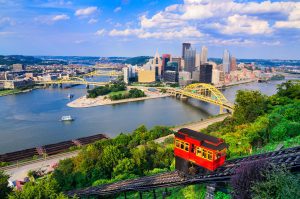Tango, famous footballers, wildlife, wine, and excellent food – these are just a few things Argentina is known for.
With a population of 44,938,712, Argentina is home to about 0.58% of the worldwide population.
It is the 31st largest country in the world and is located in southern South America between Uruguay and Chile.
The population of Argentina is heavily influenced by Spanish and Italian occupants, that is why the people speak several languages including Spanish, Italian, German, and French.
Also called the Land of the Silver, Argentina is a developing country with one of the lowest birth rates in the world – 15.8 births per 1,000 people – and a high life expectancy rate of 78.07 years.
The largest city in Argentina is Buenos Aires city, with a total population of 2,936,877, whereas the 30th spot is taken by Concordia with 149,450 residents.
Table of Contents
The Largest Cities in Argentina (by Population)
| Number | City | Population |
|---|---|---|
| 1 | Buenos Aires | 2,936,877 |
| 2 | Córdoba | 1,317,298 |
| 3 | Rosario | 1,193,605 |
| 4 | La Plata | 643,133 |
| 5 | Mar del Plata | 593,337 |
| 6 | San Miguel de Tucumán | 548,866 |
| 7 | Salta | 520,683 |
| 8 | Santa Fe de la Vera Cruz | 391,164 |
| 9 | Vicente López | 360,078 |
| 10 | Corrientes | 346,334 |
| 11 | Pilar | 296,826 |
| 12 | Bahía Blanca | 291,327 |
| 13 | Resistencia | 290,723 |
| 14 | Posadas | 275,028 |
| 15 | San Salvador de Jujuy | 257,970 |
| 16 | Santiago del Estero | 252,192 |
| 17 | Paraná | 247,139 |
| 18 | Neuquén | 231,198 |
| 19 | Formosa | 222,226 |
| 20 | Lanús | 212,152 |
| 21 | Godoy Cruz | 191,299 |
| 22 | Las Heras | 189,067 |
| 23 | La Rioja | 178,872 |
| 24 | Comodoro Rivadavia | 175,196 |
| 25 | San Luis | 169,947 |
| 26 | Ituzaingó | 168,419 |
| 27 | Ezeiza | 160,219 |
| 28 | San Fernando del Valle de Catamarca | 159,139 |
| 29 | Río Cuarto | 157,010 |
| 30 | Concordia | 149,450 |
1. Buenos Aires – 2,936,877

Location: Central-eastern of Argentina and on the western shore of the Río de la Plata estuary
Total Land Area: 203 sq km
Buenos Aires is the capital and the most populated city in Argentina with 2.9 million people.
It is a cosmopolitan city that is also known as the Capital Federal of the country.
The city boasts a rich cultural heritage and many famous places to explore. One of the most popular sites in the city is the Recoleta Cemetery, a cemetery for notable Argentinians.
Its vibrant history and art scene are shown through various establishments including Museo Nacional de Bellas Artes, Feria Artesanal de Palermo Viejo, Carlos Thays Botanical Garden, and the Museum of Latin American Art of Buenos Aires (MALBA).
2. Córdoba – 1,317,298

Location: Sierras Chicas in central Argentina
Total Land Area: 165,321 sq km
Located in Sierras Chicas, Córdoba is the second-largest city in Argentina and is the capital of Córdoba Province.
It has a population of 1,317,298 residents and covers a total land area of 165,321 sq km.
Founded in 1573, Córdoba is one of the oldest Spanish colonial cities and was once called La Docta.
The city is teeming with many historical landmarks and one of the oldest buildings in the country including the country’s oldest university, the National University of Córdoba, and the World Heritage Site, the Jesuit Block.
Today, the city’s economy heavily relies on certain industries including industry, agriculture, and manufacturing.
Some of the well-known companies situated in the city are Renault, Volkswagen, Arcor, Argentine spaceport, and Intel.
3. Rosario – 1,193,605

Location: Santa Fe, central-eastern region of Argentina.
Total Land Area: 178.69 sq km
With a population of 1,193,605 residents, Rosario ranks as the third-largest city in Argentina, occupying a total land area of 178.69 sq km.
The city is known as the Cradle of the Argentine Flag and is an attractive location for its neoclassical architecture.
The city has one of the country’s major shipping ports and some major railways of the country. Its economy also thrives from agriculture, specifically soya production, where approximately 5 tons of soya are produced in some provinces of Rosario.
From culture to history and art, Rosario has captivated many visitors across the globe.
Some of the best historical places to explore in the city are Monumento a La Bandera, the Statue of Che Guevara, and Teatro El Círculo.
Art enthusiasts can head over to Museo De Arte Contemporáneo to see a collection of important artwork or Museo Municipal de Bellas Artes Juan B Castagnino which houses about 3,000 works.
4. La Plata – 643,133

Location: Buenos Aires Province
Total Land Area: 27 sq km
Founded in 1882, La Plata is the capital of the province of Buenos Aires with 643,133 people.
The city is known as the center for education and politics and is home to one of the most reputable universities in the country, the National University of La Plata.
La Plata is called the City of Diagonals for incorporating diagonal avenues. Some of the most popular historical places to see in the city are Casa Curutchet, a UNESCO World Heritage Site, and La Plata Cathedral, the largest cathedral in South America.
Moreover, the city has several places to immerse oneself in the beauty of nature, such as Paseo del Bosque and Pereyra Iraola Park.
To learn about history, the Natural Science Museum and Teatro Argentino are some of the best places to go to.
5. Mar del Plata – 593,337

Location: Buenos Aires Province
Total Land Area: 79.480 sq km
Mar del Plata is the fifth largest city in Argentina and the second-largest in the province of Buenos Aires.
It has a total population of 593,337 residents living in a land area of 79.480 sq km.
Since many tourists go to Mar del Plata to visit Argentina’s largest beaches, tourism has become the economy’s driving force.
There are several private beach resorts, as well as free public beaches such as Playa Varese, Playa Iglesia, and Playa Grande.
Its economic activity also revolves around its major fishing ports and manufacturing industry.
Some of the well-known places to see are Torre Tanque, Villa Victoria, and Aquarium Mar del Plata.
6. San Miguel de Tucumán – 548,866
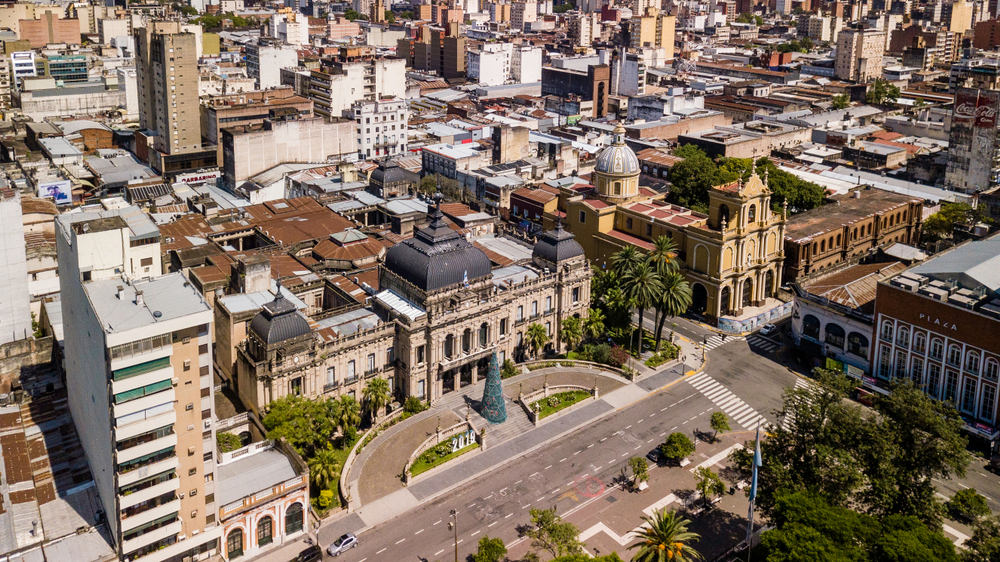
Location: Tucumán Province
Total Land Area: 90 sq km
Founded in 1565, San Miguel de Tucumán is the capital of the Tucumán province in Argentina.
It is inhabited by 548,866 people in a total land area of 90 sq km.
The city is notable for its contributions in fighting for the country’s independence, which is represented by various landmarks such as the Casa De Tucumán and Plaza Independence, the city’s square that has the Statue of Liberty, La Casa del Gobierno, and the Catedral de Nuestra Señora de la Encarnación.
The city is called the Garden of the Republic since it is a major producer of various plants including fruits and rice.
Today, people can visit one of the biggest parks of the city, Parque 9 de Julio, which is filled with plenty of things to do such as exercising, restaurant hopping, and picnicking.
Another must-visit park is Parque Sierra de San Javier, a park known for its serene landscape and the statue of Cristo Benedicente.
7. Salta – 520,683

Location: Salta Province
Total Land Area: 60 sq km
Salta was founded in 1582 and is the capital of Salta province. The city has a total population of 520,683 and occupies an area of 60 sq km.
Its economy is diverse – from agriculture to lumber and mining. Known as Salta la Linda or Salta the Beautiful, it got its nickname for having natural landscapes and historical buildings.
The old buildings in the city were built in the 18th century, and one of them is the Church of Saint Francis.
Some of the most popular culture and arts centers are the French Style Museum of Contemporary Art and the neoclassical Museum of High Mountain Archeology.
8. Santa Fe de la Vera Cruz – 391,164

Location: Santa Fe Province, the north-eastern region of Argentina
Total Land Area: 748 sq km
Founded in 1573, Santa Fe de la Vera Cruz is the capital city of the Santa Fe province located along the Paraná River.
It is the eighth-largest city in Argentina with a total population of 391,164, covering a total land area of 748 sq km.
It’s safe to say Santa Fe de la Vera Cruz is one of the best places to live as it is home to several universities, entertainment establishments, transportation centers, and well-preserved cultural buildings.
One of the most iconic locations of the city is the Puente Colgante, the popular suspension bridge for walking and hanging out.
To learn about history, visit the Museo Histórico Provincial Brigadier General Estanislao López, Convento Y Museo de San Francisco, and Rosa Galisteo de Rodriguez Fine Arts Museum.
For more mesmerizing landscapes, go to the beaches, Paraná River, and Reserva Ecológica.
9. Vicente López – 360,078

Location: Buenos Aires
Total Land Area: 34 sq km
Vicente López is located in Buenos Aires and is bordered by neighboring cities including Florida, Olivos, and Río de la Plata.
The population is composed of several ethnicities such as Italian, Spanish, German, Ukrainian, and Polish.
Some of the top industries in the city are manufacturing, residential, and tourism. The most noteworthy commercial streets are Maipú Avenue and Libertador Avenue.
Other must-see places are Paseo de la Costa, Tecnopolis, and Reserva Ecologica Vicente Lopez.
Aside from sightseeing, there’s scrumptious food and exciting nightlife to enjoy.
10. Corrientes – 346,334

Location: Corrientes Province, east of the Paraná River
Total Land Area: 500 sq km
Corrientes is the capital city of Corrientes Province with a population of 346,334. The city hosts one of the most anticipated carnival events in Argentina.
Its architectural design is a blend of colonial and modern. One of the most popular places for activities in the city is in the Corrientes Costanera where people can watch the sunset or exercise.
The city is also nicknamed the City of Murals for having over 70 murals, some of which can be viewed by the bridge going to Chaco.
Other popular places to visit are the Dr. Juan Ramón Vidal Fine Arts Provincial Museum, the Mburucuyá National Park, and local cathedrals.
11. Pilar – 296,826

Location: Buenos Aires
Total Land Area: 352 sq km
Another large city from the province of Buenos Aires is Pilar city, with a population of 296,826.
The city has many celebrations such as Our Lady of the Pilar and the Signing of the Treaty of Pilar.
For tourists going to the city, the best places to admire the city’s rich history are October 12 Square, Treaty of Pilar, Municipal Palace, Our Lady of the Pilar, and Cross of Pilar.
The city also has natural reserves such as Pilar Nature Reserve, a 297-hectare land filled with lagoons, flora, and animals.
Moreover, it is known as the National Capital of Polo for having several country clubs and hosting recognized tournaments.
Plus, the city has numerous shopping centers including Torres del Sol and Las Palmas del Pilar.
12. Bahía Blanca – 291,327

Location: Southwest of Buenos Aires, by the Atlantic Ocean
Total Land Area: 2,247 sq km
Founded in 1828, Bahía Blanca is the seat of government of Partido de Bahía Blanca. Its city name is translated to “white bay”, which was derived from the white salts of its shores.
The city’s economy relies on the production and exportation of various products such as wool, oil, grain, and fruits.
Every corner of the city is like a walk in history due to its historical buildings, monuments, and sculptures.
Moreover, the city is home to numerous museums including Port Museum, the Fine Arts Museum, and Ferrowhite Museum.
For entertainment and leisure, the city boasts its many cinemas, restaurants, and natural reserves such as the Estuary.
13. Resistencia – 290,723

Location: Chaco Province, northeast Argentina
Total Land Area: 562 sq km
Resistencia was established in 1865 and is now the capital of Chaco Province. It is the largest city in Chaco and the 13th largest in Argentina.
The city is well known for being the City of Sculptures for having over 500 monuments and pieces of artwork in every corner of the city.
Its economy flourishes from several industries including trading, agriculture, and service sector.
Travelers who wish to visit Resistencia should come in July to experience the Bienal de Escultura Festival where one can watch sculptors make their creations.
Other must-visit places in the city are MusEUM, Museum of the Chaqueño Man, El Fogón de los Arrieros, and Espacio Originario.
14. Posadas – 275,028

Location: Misiones region, northeast Argentina
Total Land Area: 324 sq km
Posadas was founded in 1870 in the province of Misiones. It is the capital city of Misiones and the 14th largest city in Argentina with 275,028 residents.
The city is a major producer of tobacco, furniture, and various food items. Moreover, it teems with nightlife, monuments, and museums.
One of the most honorable monuments is the Andres Guazurari Monument and Monument of Mate, which are sculptures made of metal.
Nothing beats hangouts by the river as these can be done along the stretch of the Costanera.
15. San Salvador de Jujuy – 257,970

Location: Jujuy region, northwest Argentina
Total Land Area: 19 sq km
The city of San Salvador de Jujuy, San Salvador for short, is the capital city of the province of Jujuy.
It is the largest city of Jujuy and the 15th largest city in Argentina with 257,970 residents living in the city.
The city was founded in 1593 by Francisco de Argañarás y Murguía. It is considered the epicenter of economical and provincial government activities.
Some of the most important production industries situated in the city are sugar, petroleum, and fruits and vegetables.
For sightseeing, the most popular places for locals and tourists are Belgrano Square and the Government Palace, Cathedral of St. Francis, and Monument to Manuel Belgrano.
16. Santiago del Estero – 252,192

Location: Santiago del Estero, north Argentina
Total Land Area: 2,116 sq km
With a population of 252,192, Santiago del Estero is the 16th most populated city in Argentina.
It is the capital city of the province of Santiago del Estero with a total land area of 2,116 sq km.
The city is known by many names such as the Mother of Cities and the Cradle of Folklore.
It is considered the oldest city in Argentina and is filled with a rich heritage.
Some of the oldest places in the city are Iglesia de la Merced and Parque Aguirre. The city also has a lot of grasslands and deserts areas such as Copo National Park and Reserva Ecológica Forestal.
17. Paraná – 247,139

Location: Entre Ríos, east of the Paraná River
Total Land Area: 137 sq km
The city was founded in 1730 and its original dwellers were known as Baxada del Paraná.
Today, it has a population of 247,139 residents and is now the head of the provincial government.
The city has a diverse economy that mainly focuses on shipping and manufacturing. Some of the best places here to immerse in the Argentine lifestyle are Parque Urquiza, Thomspon Beach, and Parque Nacional Pre-Delta.
On top of that, this bustling port city makes it more interesting with its several historical landmarks such as the Church of the Sacred Heart of Jesus, Provincial Natural Science and Anthropology Museu, and Catedral de Parana.
18. Neuquén – 231,198

Location: East of Neuquén Province
Total Land Area: 128 sq km
Nestled in the western regions of Limay and Neuquén rivers, Neuquén is the capital city of Neuquén Province and is the largest city in the Patagonia region.
Agriculture and petrochemical production are the city’s major industries.
Neuquén offers fascinating historical scenes with several heritage landmarks including Fotheringham Crossing Pyramid and Gregorio Álvarez and the Paraje Confluencia museums.
Moreover, the city was once a host in the 1995 and 2001 FIBA Americas Championship.
This tourist destination has many mountainous regions and breathtaking sceneries. Some of the mesmerizing natural landscapes for relaxation are Limay River, Paseo de la Costa de Neuquen, and Lago Hermoso.
19. Formosa – 222,226

Location: Formosa Province, on the Paraguay River
Total Land Area: 72,066 sq km
Formosa is nestled on the banks of the majestic Paraguay River. With a population of 222,226 residents, it is ranked the 20th most populated city in Argentina.
Founded in 1879, it is the capital city of the province of Formosa. It is a port city since it is by the riverbanks of the Paraguay River.
As a result, the city is the center of transportation and agricultural production. For those passing by the city, some of the places worth visiting are the Paraguay River, Plaza San Martin, and Museo Historico Provincial.
20. Lanús – 212,152

Location: Lanús Partido in Buenos Aires Province, south of the city of Buenos Aires
Total Land Area: 45 sq km
Founded in 1888 by Guillermo Gaebeler, Lanús was first named Villa General Paz, before officially changing its name in 1955.
The name was influenced by Anacarsis Lanús, the owner of the city’s land.
Lanús is the center of several major industries including the manufacturing of leather and rubber, as well as the production of vegetables and fruits.
The city is also known as the home of Club Atlético Lanús, a football club that also has a basketball team.
The top sights in the city are the Museum of Contemporary South, Plaza Sarmiento, and Museo Ferroviario.
Among the educational institutions available in the city, the most notable one is the National University of Lanús.
21. Godoy Cruz – 191,299
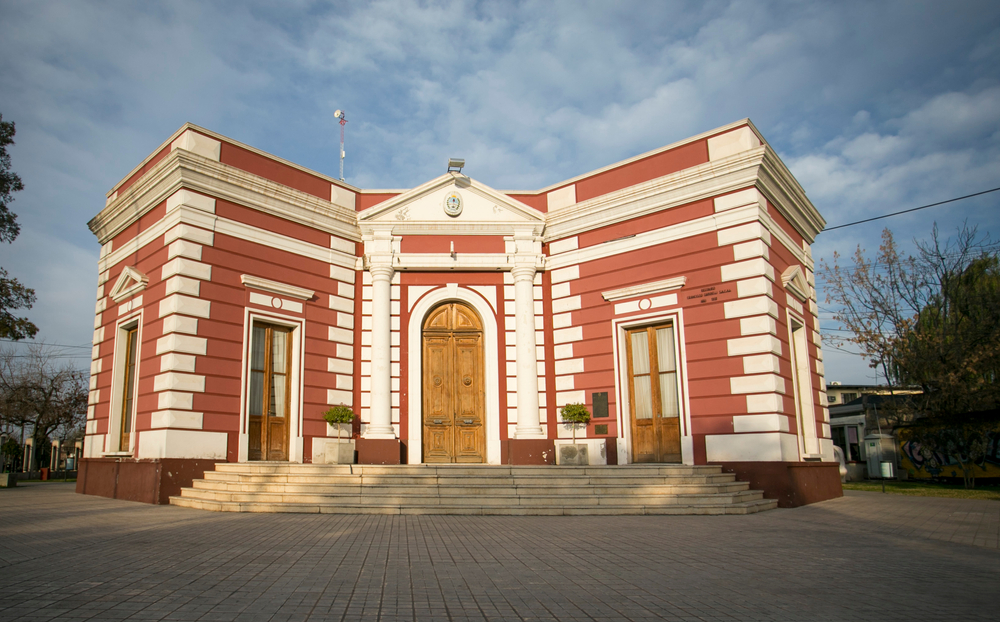
Location: Mendoza Province
Total Land Area: 156 sq km
Godoy Cruz used to be named Villa de San Vicente and Villa Belgrano before officially becoming a city and changing its current name in 1909.
The city was named after Dr. Tomás Godoy Cruz, a former governor of the province of Mendoza.
The city has several parks and squares for relaxation, sports, and spending time with friends and family.
Moreover, there are many old wineries for wine enthusiasts such as Bodega Escorihuela, Bodega Navarro Correa, and Horarios de Visita
Hiking and spending time in nature are popular activities here, which are made possible by the many green spaces of the city such as El Melocotón, El Peral, and La Cantera.
The natural landscapes in Godoy Cruz span about 32 sq km.
22. Las Heras – 189,067

Location: Mendoza Province, north of Mendoza City
Total Land Area: 8,955 sq km
Another city from the province of Mendoza, Las Heras is the 23rd largest city in Argentina with a population of 189,067.
It was named Las Heras in honor of General Juan Gregorio de las Heras, a former governor of Buenos Aires who was considered a hero in the war of independence of the country.
Although Las Heras is a hidden destination in Argentina, it offers bountiful places to explore and unique experiences to try.
From history to outdoor adventure and wildlife, there is something for every kind of tourist.
Campo Historico El Plumerillo is a national museum that is worth visiting for history lovers. For parks and leisure, Plaza Marcos Burgos is the place to be.
23. La Rioja – 178,872
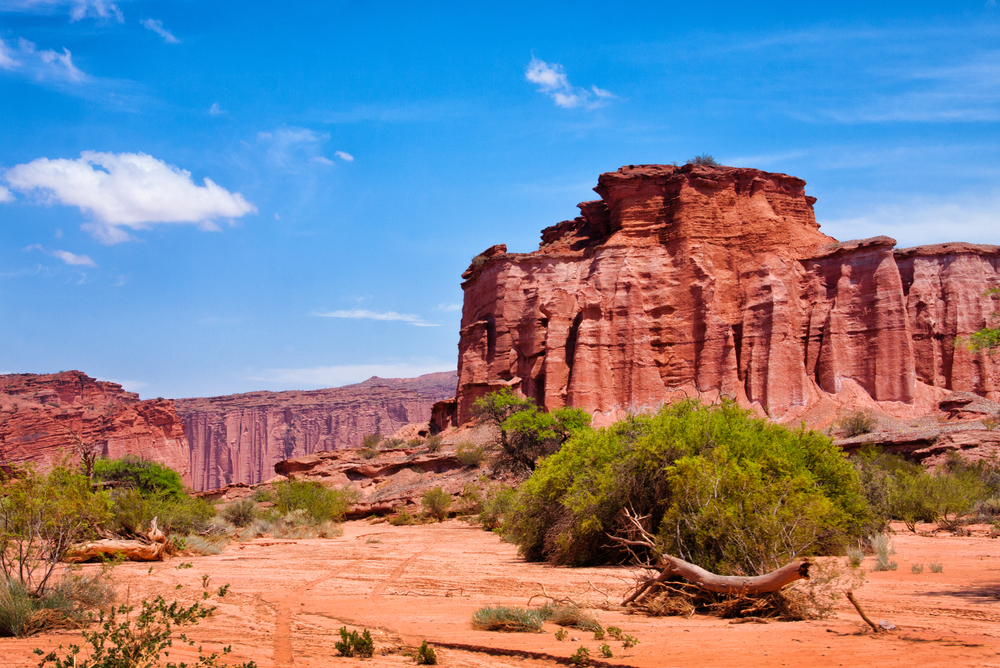
Location: East of La Rioja Province, northwest Argentina
Total Land Area: 5,045 sq km
La Rioja is the capital city of the province of La Rioja located at the base of the Velasco Mountains with 178,872 residents.
Founded in 1581 by gold seekers, the city has been growing ever since.
Its economic activity is centered on metals including copper and silver. Additionally, it also relies on agricultural products such as grapes, apples, and olives.
Some of the most notable landmarks of the city are the Museo Folklórico and Estadio Carlos Augusto Mercado Luna.
24. Comodoro Rivadavia – 175,196

Location: Southeast of the province of Chubut, southeast Argentina
Total Land Area: 548.2 sq km
Founded in 1901, Comodoro Rivadavia is a port city on the coast of the Gulf of San Jorge and at the Chenque Hills.
The name was taken from Comodoro Martín Rivadavia, an honorable man of Argentina.
One of the first major industries that started in the city is the oil industry, which began in 1907.
The city is also an industrial center for chemical production, shipping, and manufacturing.
Comodoro Rivadavia is a city of sports that is known for certain sports such as basketball and football.
It has a basketball team called Club Gimnasia y Esgrima de Comodoro Rivadavia and several football clubs such as Tiro Federal, and Ferroviario.
Some of the best activities to do in the city are taking a ride around the port, sailing near the beach, and visiting the Oil National Museum.
25. San Luis – 169,947

Location: San Luis Province, west-central Argentina
Total Land Area: 88.32 sq km
San Luis was founded in 1594 and is located at the foothills of the Sierras Grandes. It was refounded in 1596 and is now the capital city of San Luis Province.
Meat processing and agriculture are the staples of its economy. In addition, consumer-oriented industries play an important role in the local economy.
A trip to the city isn’t complete without stopping by the many interesting places such as Park of the Nations, Dora Ochoa de Masramón Provincial Museum, and Independence Park.
People can also go fishing in Lake Potrero de Los Funes and admire nature at the Sierra de las Quijadas National Park.
26. Ituzaingó – 168,419

Location: Ituzaingó Partido, western region of Buenos Aires
Total Land Area: 23.6 sq km
Ituzaingó is a small city located in Greater Buenos Aires with a population of 168,419, occupying a total land area of 23.6 sq km. Moreover, it became the capital city of Ituzaingó Partido in 1955.
With its quiet streets and green spaces, it has a small-town vibe for a city. Some of its notable establishments in the city are Hospital del Bicentenario de Ituzaingo and Municipal Museum of Ituzaingó.
It is a peaceful residential area close to a few natural spots such as Reserva Natural Urbana de Moron and Parque Leloir.
27. Ezeiza – 160,219
Location: Ezeiza Partido, southwest Buenos Aires
Total Land Area: 80 sq km
Ezeiza is a small city suburb of Buenos Aires in the southwestern region with a population of 150,219 residents.
It was founded in 1885 and was first populated by indigenous inhabitants known as the Querandí people.
The city is known for being a hub for domestic and international flights since the Ezeiza International Airport was built in 1950, which was the first international airport to be constructed in the country.
Today, Ezeiza is a well-established residential town with several attractions such as Ezeiza Woods and Cabeza de Caballo.
Some of the major institutions established in the city are the Provincial University of Ezeiza, Ezeiza Atomic Center, and Dr. Alberto Eurnekian Hospital.
28. San Fernando del Valle de Catamarca – 159,139
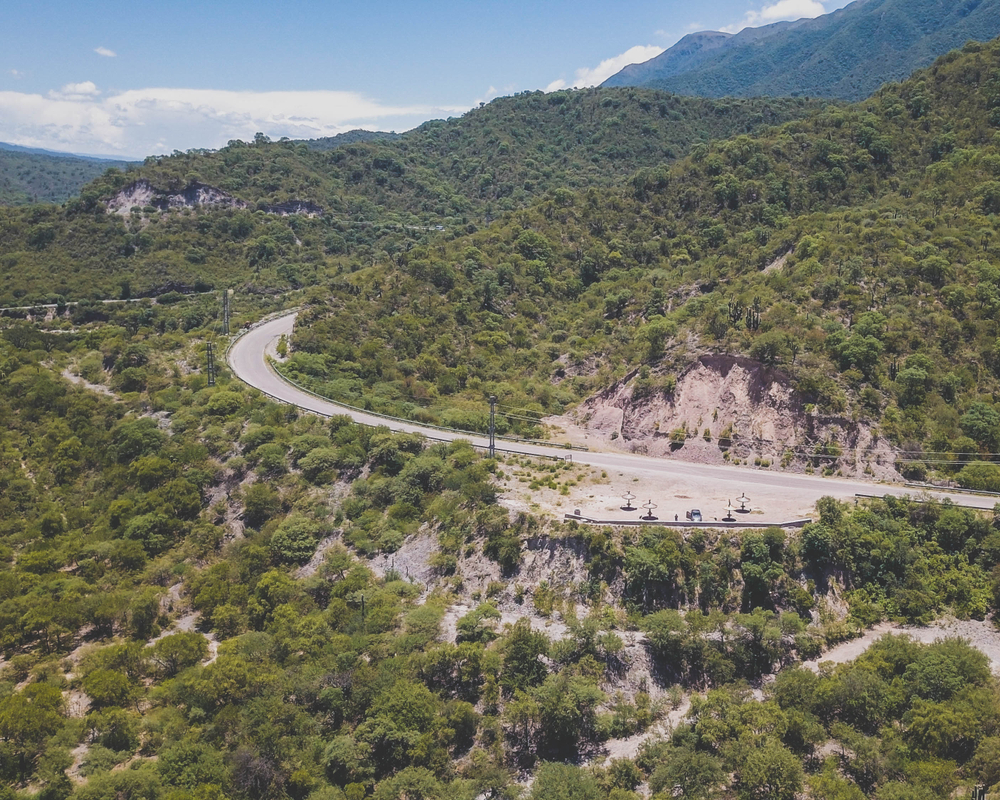
Location: Catamarca Province, northwest Argentina
Total Land Area: 684 sq km
Located at the foothills of Cerro El Manchao in the province of Catamarca, San Fernando del Valle de Catamarca is the 28th largest city in Argentina with a total of 159,139 occupants.
It is the capital of the province of Catamarca and was established in 1558.
The name of the city is translated to “fortress on the slope” as it is located at the foot of the mountains.
Its economy is driven by the production of fruits and wine, as well as mining and cattle production.
It is a fascinating destination with a lot to offer, from natural scenery to unique landmarks.
Discover the beauty of El Jumeal dam, the rich history of Catedral Basílica de Nuestra Señora del Valle, and the picturesque urban landscape of San Fernando del Valle de Catamarca.
29. Río Cuarto – 157,010

Location: South of Córdoba Province
Total Land Area: 64.25 sq km
Founded in 1789 by Governor Rafael de Sobremonte, Río Cuarto has a population of 157,010 residents in a total land area of just 64.25 sq km.
It is home to the National University of Río Cuarto and the Humid Pampas, an important grassland for agriculture.
Today, the city maintains major industries such as commercial, agriculture, and meat production.
It is a popular place for car racing events and the Río Cuarto craters.
Additionally, it offers several cultural places such as the Regional Historical Museum, Museo Municipal de Bellas Artes, and Museum Riel.
30. Concordia – 149,450

Location: Northeast of Entre Ríos Province
Total Land Area: 3.259 sq km
At the bottom of the list is Concordia, a city located in the northeastern region of Entre Ríos Province and nestled in the banks of the Uruguay River.
It is connected to another city in Uruguay via the Salto Grande Dam.
The city was founded in 1832 and has thrived with several economic industries, including citrus production, manufacturing, and commercial.
For leisure and recreation, the city offers several facilities such as golf clubs, museums, fishing areas, and parks.
















